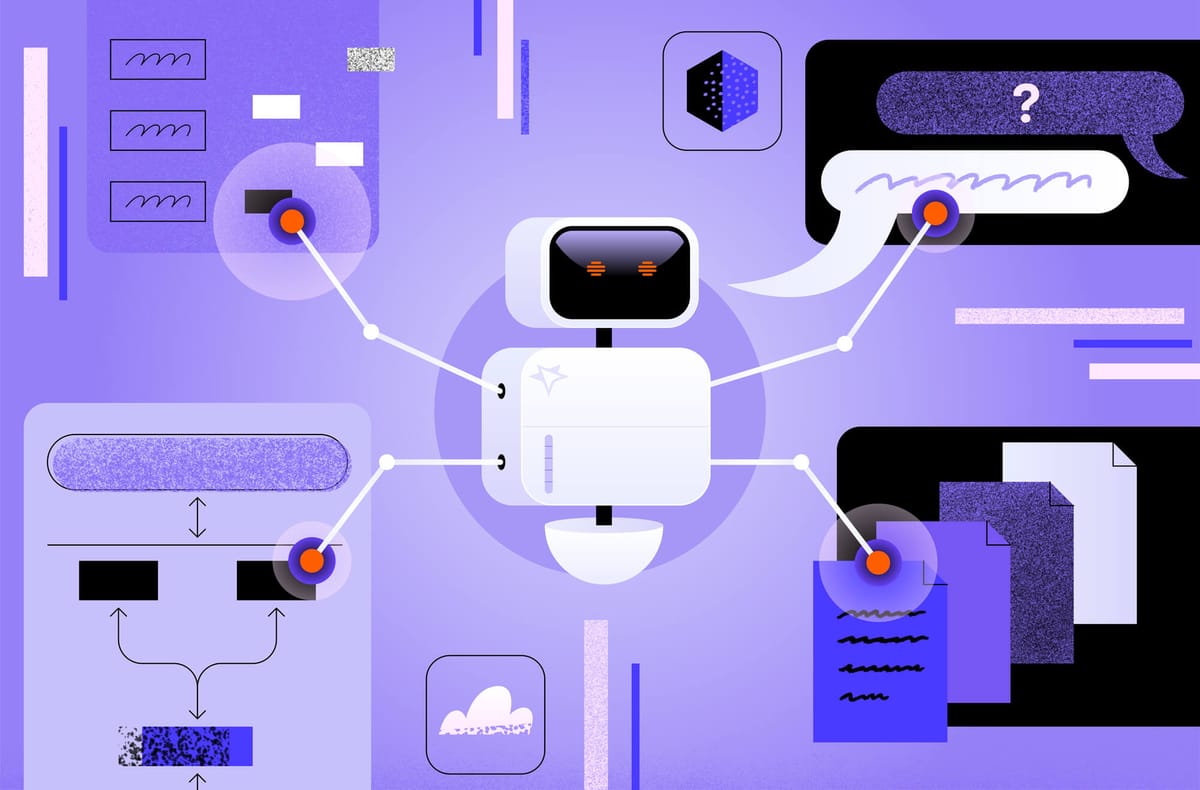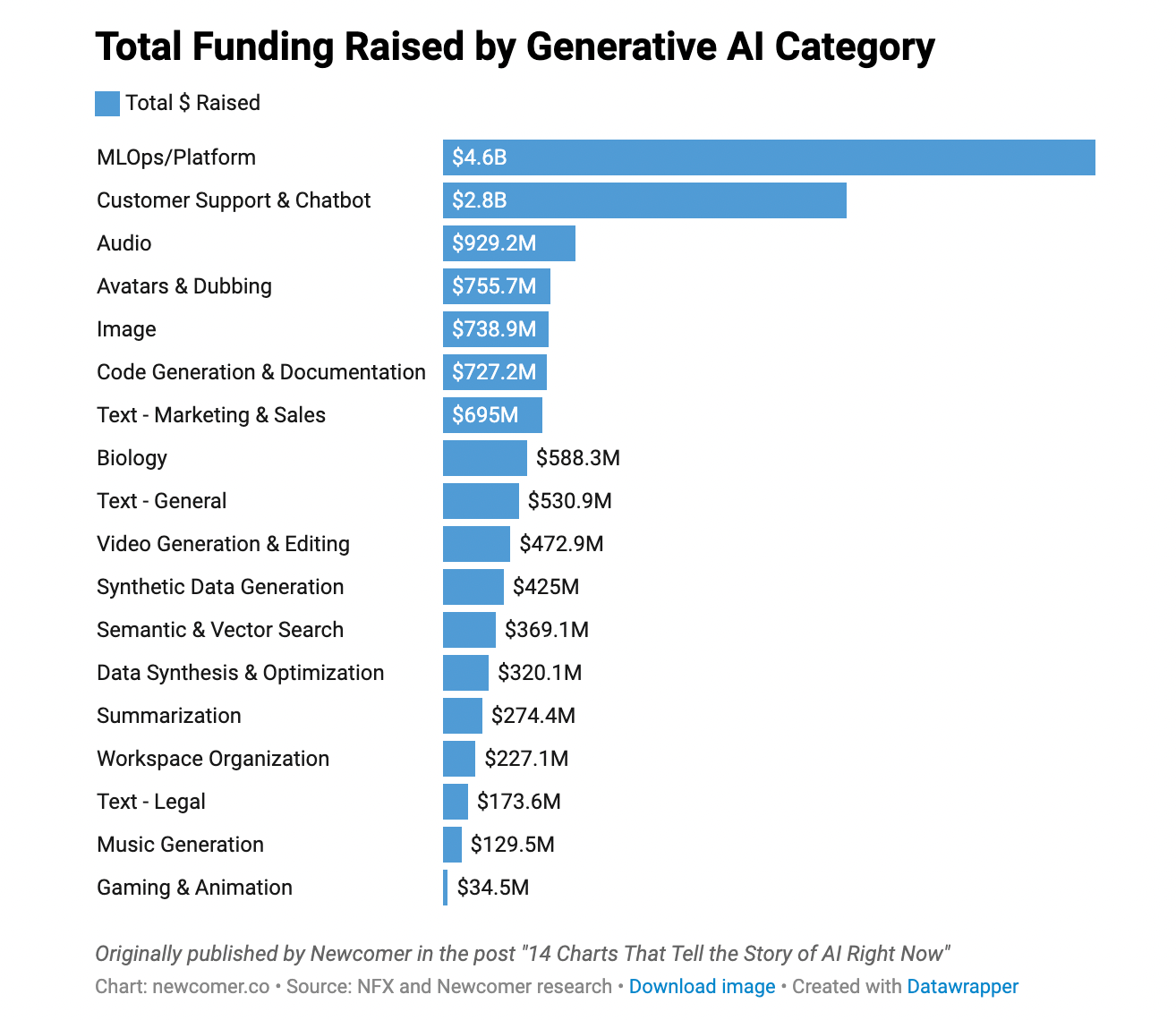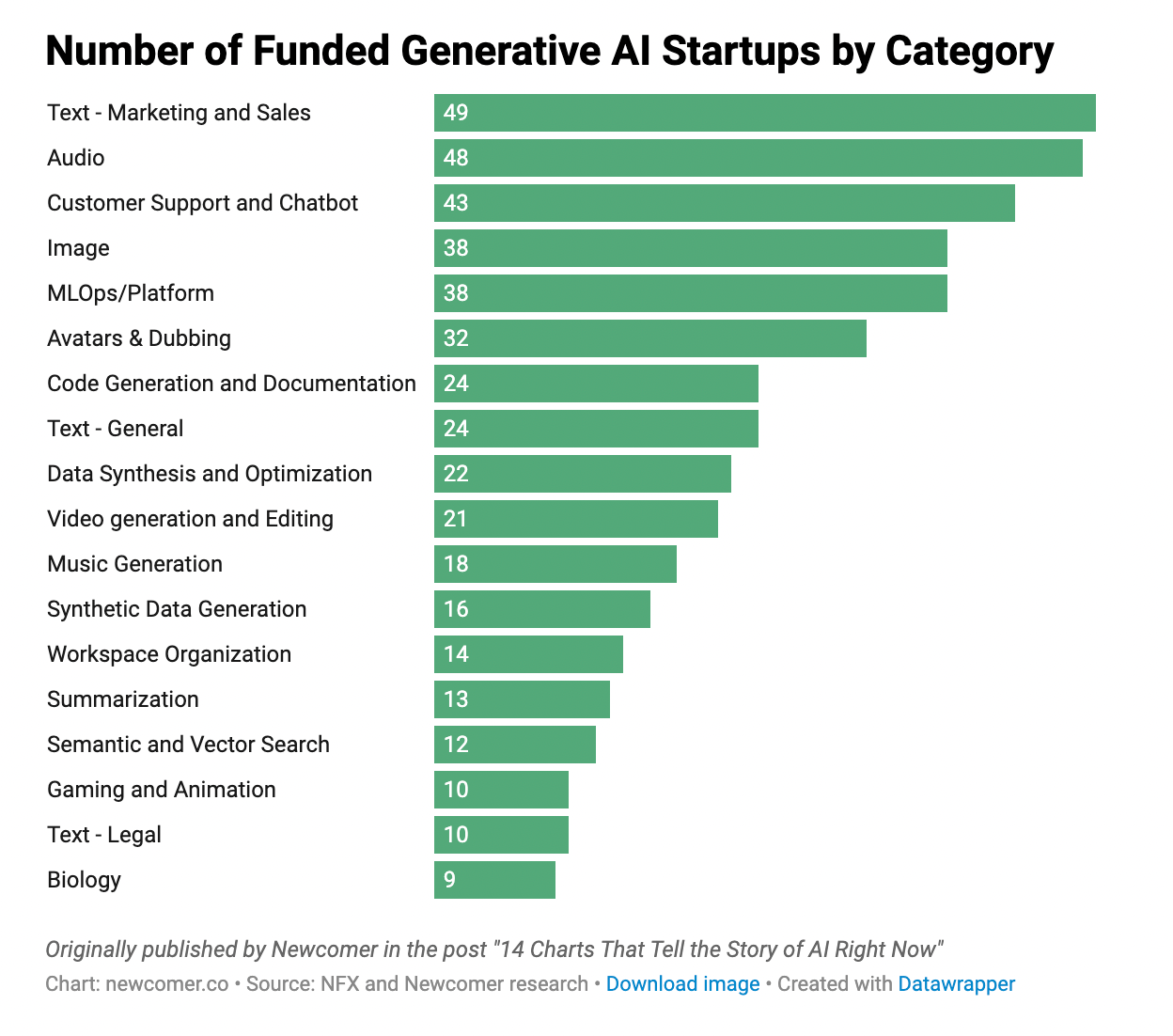How to Win the AI Developer Tools Arms Race
AI alone can't disrupt a business, the companies that survive and thrive are the ones that are using the technology to solve real problems.

Using the term “AI Arms Race” may be interpreted as sensationalism and/or just another way to hype the latest hot trend in technology … until you look at the numbers:
- There have been more than 1,000 mentions of AI on S&P 500 company earnings calls this year.
- Nvidia briefly reached a $1 trillion market capitalization in May (only six other US companies had ever hit that mark).
- OpenAI’s ChatGPT is attracting an estimated 96 million visitors per month.
Even amid a broader investment drought, AI-related startups in the US have landed $25 billion in funding so far in 2023. Investors are sending a clear message: emphasizing your AI capabilities makes financial sense and you don’t want to be caught sitting on the sidelines.
This is particularly evident in the developer tools space: funds like a16z and ICONIQ predict explosive growth for new cloud services thanks to generative AI and there are already thousands of AI tools with more and more ‘code generation & documentation’ apps being funded everyday.

It’s Not Just a “Phase”
Should you rely on the messages investors are sending and jump into the AI pool?
It’s hard to argue that AI is not a bubble waiting to pop when you hear gasp-inducing investment announcements such as Inflection AI raising $1.3 billion or a 4-week-old startup, Mistral AI, raising ~$113 million and hitting a record high in the EU for the biggest seed round.
However, this kind of hype cycle and frenzied investing is inevitable when you develop paradigm-shifting technologies that have the potential to touch every industry and enable new and interesting use cases that were never before possible.
Given the opportunity that AI and LLMs present, seeing a lot of money rolling into the space is justified, but it’s also very reminiscent of the dot-com boom where large sums of money were being thrown at problems that were not much more than a business plan or maybe a little bit of code.
I’m sure that we’ll see a spike in investments followed by the realization that not everything requires an AI solution: some investors might regret backing companies that were chasing a problem that doesn’t exist, while the companies that survive and thrive are the ones that are using the technology to solve real problems.

How to Win the AI Products Arms Race
There have always been, and will continue to be, constant shifts in technology. Besides AI, other big technology trends that will have a significant impact in the future are low-code and no-code software development, zero-trust technologies, robotics, crypto, etc.
It’s normal to experience FOMO and want to hop on the newest technologies being released. However, the key to winning the “AI Arms Race” (and arguably, to winning any GTM - go to market - race) is to solve an existing, concrete, and proven problem.
AI alone can't disrupt a business: the graveyard of AI-based products that did not find PMF (product market fit) is vast, with some very visible examples:
- Meta roughly lost $49B on its Reality Labs division since 2012
- Amazon lost ~$10B on Alexa
- Google shut down Duplex
- Ford is shutting down Argo AI with (at least) a $827M loss
Finding PMF means that you’re offering a unique product that people desperately want because it solves a painful problem.
Not only that, but, generally, Enterprises can’t “buy a technology” even if it’s based on a ground-breaking application of AI: you still need to invest time thinking about control, security, versioning, management, client privilege, etc. before it becomes a complete product or tool.
How Multiplayer Uses AI at its Core
This is a great time to be in the AI business. And, an even better time to be using AI to solve the challenges of designing, developing, and managing distributed systems.
“There’s a dire need for a dev tool that helps teams visualize and collaborate when making changes to their backend software. Multiplayer makes design reviews and feature development easier and more collaborative, targeting a massively underserved market in the dev tool space.” - Mitch Wainer, co-founder of DigitalOcean.
As a backend developer for 20-plus years, I’ve been painfully aware of the lack of tooling for teams that work on backend software for a while. When I started to look into how to solve this headache, I realized that the problem affects many aspects of backend development: how teams visualize system architecture at a high and low level, how they communicate and collaborate in real time, and how (or if) they have an official design review before they start to code.
Back when software was designed as a monolith, the need wasn’t as dire, but now that backend systems are a collection of different microservices and SaaS products, it's all about the connections and the dependencies.
And distributed software has a host of new problems that need to be solved.
We’re now at a point where multiple tech-wide trends have converged and have created a “right time, right place scenario”: the proliferation of distributed software, the mainstream adoption of visual collaboration tools for teams, and the huge advancements in generative AI.
Not only are we solving a painful problem and bringing together everything a team needs to develop backend software, but we are also well-positioned to leverage two critical aspects of AI capabilities for developers:
- System architecture patterns and best practices (see how AI will transform system architecture design and management)
- Distributed software management (see the best practices when adding AI to your distributed architecture).
If you’re interested in making backend development effortless for you, sign up for free now!
